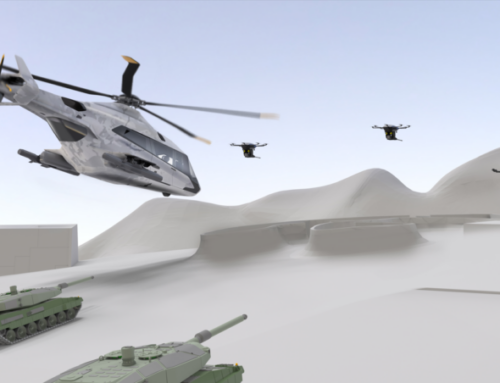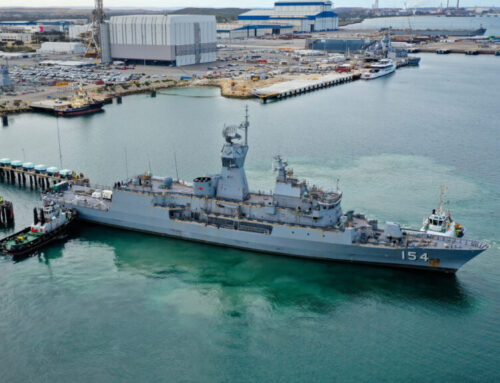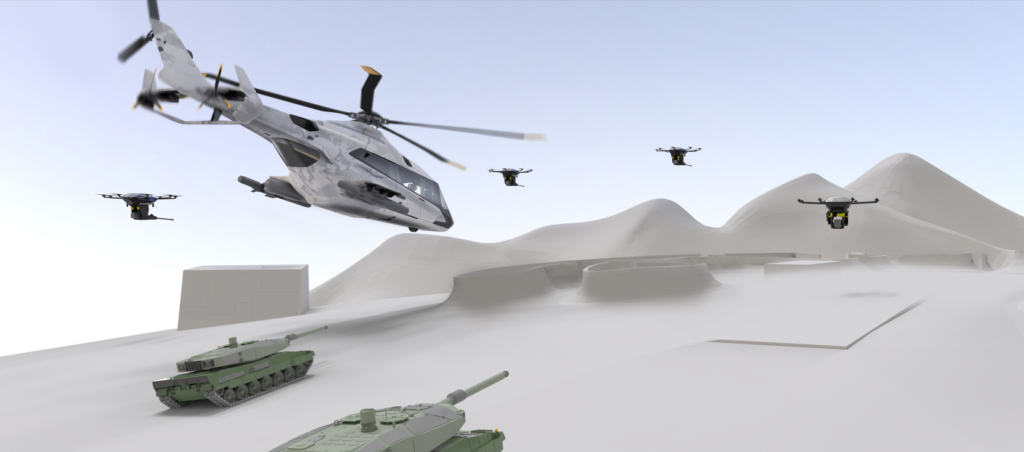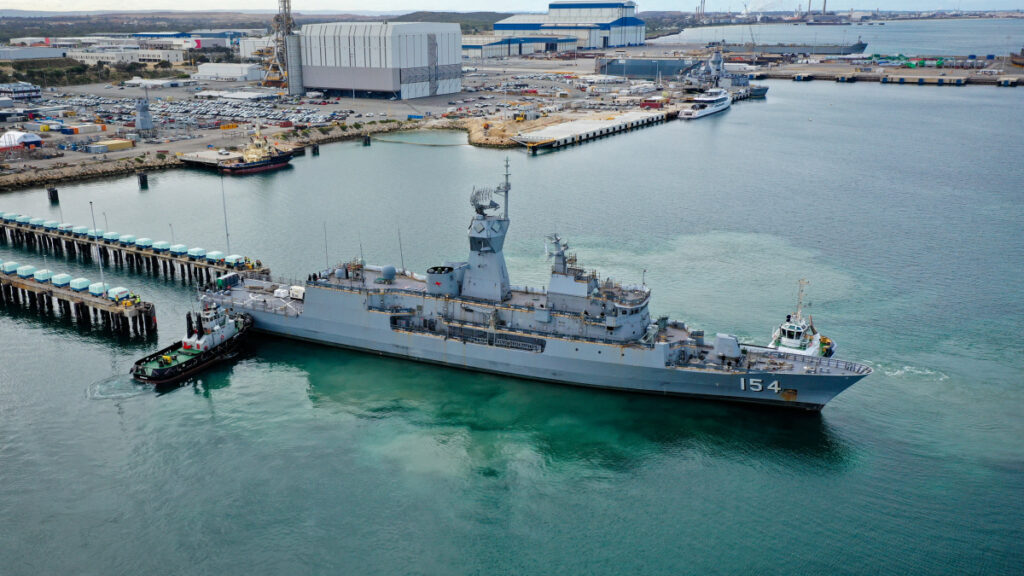IAI’s Air Lora was unveiled during the 2024 ILA Berlin Air Show. (Tim Martin/Breaking Defense)
JERUSALEM — Israel Aerospace Industries unveiled a new air-launched variant of its Lora ballistic missile on June 6, a design the company claims will enhance Israel’s ability to provide long-range strike at rapid speed.
The Lora has its origins in a ground based long-range artillery weapon system that the company demonstrated at ranges up to 400 km back in 2020. The new air-launched version was rolled out for the first time at the ILA Berlin Air Show.
Ari Maman, a Business Development Executive at IAI told Breaking Defense that the company developed the Air Lora because “we see a big market for this product.”
The air launched version “extends the range of the relevant targets, as the missile is launched from the maximum range of the fighters,” he added. Asked which platforms the system could be launched from, Maman said it would work with “all modern fighter platforms are potential carriers. And also transporters with hard points.” (Israel has for years launched long-range strikes off its fleet of F-15, F-16 and F-35I Adir fighter jets.)
The system was demonstrated on an F-16 for a fire test, the company said in a separate statement. However, IAI did not respond to inquiries about the range of the weapon, the potential customers and whether it was operational or combat proven.
According to company literature, the missile can be used in all-weather conditions, and can strike targets if the target location changes “during the airborne mission flight.” The company described the weapon as ideal for striking “high-quality and well-protected targets such as command centers, air force bases, infrastructure, and naval vessels in dense littorals.” IAI also claims the system is easily integrated onto existing avionics.
The weapon has different types of warheads and “features high survivability with advanced immune INS/GNSS navigation and strong anti-jamming capabilities, allowing for 24/7 operation in extreme weather conditions and highly contested battlefields,” per the company.
That navigation system is an aspect IAI hyped up through its announcement, perhaps a sign of acknowledgement that the modern electronic warfare situation means GPS weapons are too vulnerable to jamming. The company statement notes that the “high survivability of the missile is also achieved by end-game trajectory shaping and 90 degrees attack angle.”
Israel historically has not developed a large number of long-range missiles, but it does has a few key systems in inventory.
It developed the Jericho family beginning in the 1960s and, more recently, ground-based missiles called Extra and Mars. In terms of air-launched long range missiles, Israel possesses the Rampage, which was one of the missiles reports suggested may have been used in a retaliatory attack on Iran in April. Rampage was co-developed by Israel Military Industries, since acquired by Elbit systems, and IAI. Israel also uses the air-launched Sparrow, which was developed by Rafael Advanced Defense Systems; Rafael also makes a system called Rocks, which is a long-range air-launched stand-off missile.
For IAI, the air-launched Lora may be a route to market abroad a competitor for those Rafael-made weapons.
Back in June 2020 when IAI demonstrated the ground-based version of the Lora, it was billed as a precise ballistic strike missile. In a trial at sea, the Lora struck a target at 90km and 400km.
“In its ground version, the weapon system was deployed on a ship in the open sea to comply with the safety requirements of trials of this type,” IAI said at the time. (The “safety” requirements at the time were due to COVID.) “The Lora system provides ballistic assault capabilities for multiple ranges with a precision level of 10 meters CEP.”
Boaz Levy, at the time the executive vice-president and General Manager of the Systems, Missiles and Space Group said that “the impressive results of the trial prove the system’s maturity and state-of-the-art capabilities.” In October 2020 reports said the ground-based Lora had been used by Azerbaijan. The ground based version’s development goes back more than two decades to at least 2002, according to an article at Israel’s Ynet back in 2007.






![The sights from the 2024 Farnborough Airshow [PHOTOS]](https://centurionpartnersgroup.com/wp-content/uploads/2024/07/IMG_8722-scaled-e1721930652747-1024x577-hZjwVb-500x383.jpeg)




